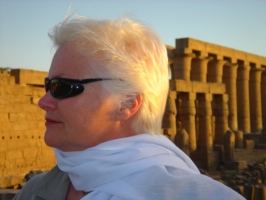Written July 2003
The works of Gustave Courbet, Edouard Manet, and Claude Monet reflected French social, political, and economic conditions as well as artistic breakthroughs in the nineteenth century Realism and Impressionist movements. As the upper classes were attempting to stay in control and only valued art done in the academic tradition, these three painters pushed aside artistic boundaries and responded to a fading agrarian lifestyle, urban social unrest, and new awareness of the artistic reaction.
After the promises of the 1789 revolution, political oppression took new forms as the upper classes and the Napoleons held power under their elegant heels once again. But a rising middle class was challenging aristocrats once again, pushing for reform–and if not reform, more revolution, and the rural class was suffering in new ways.
The economic climate was also full of disturbing storm clouds. Mechanized agrarian techniques were displacing peasants as an industrial revolution forced many to enter the Parisian slums, scramble for factory work, and live in a unique urban poverty. It was a perfect time for Gustave Courbet to rear his gorgeous artistic head. His subjects were so different from Neo-classical or Romantic mythological, allegorical, and biblical heroes or known figures from politics and history; his were non-exceptional, unknown people doing ordinary things. He created large canvases with academic draftsmanship, fine brushwork, but with a new purpose: to tell the truth. The subjects weren’t uplifting, but were very ordinary, and the Salon judges and members of the academic establishment were contemptuous (and rather terrified) of them. Courbet’s own farming class family in “Burial at Ornans,†exhausted peasants breaking up rocks in “The Stonebreakers,†and casual prostitutes in “Young Ladies by the Banks of the Seine†were certainly not heroic, elegant, or properly upper class. To the upper class, working with your hands or bodies was considered degrading, and the Salon wanted to ignore these sides of life: hard to do in such large paintings! Courbet set common people—not heroic, recognizable people–in everyday places, doing common things, and actually working.
The academic style required that artists mix paints and work in the controlled atmosphere of an indoor studio, work from busts and casts not from life, execute careful draftsmanship with subtlety and smoothed-in brushstrokes, careful shadowing to show roundness and shape, subtle lighting, cohesive composition, proper proportions, foreshortening, and horizon lines. Courbet could certainly compete as a great draftsman and painter and his “Burial at Ornan†and “Painter’s Studio†certainly looked traditionally academic with their huge size. However, with their more subdued, earthy colors and the figures’ frank, unidealized plainness, these paintings were both rejected at the 1855 Salon/World’s Fair.
Courbet then decided to show his paintings himself in a private tented show in that year in “The Pavilion of Realism.†The popularity of this unique venue and idea puffed air under Courbet’s painterly wings to continue side-stepping the Salons and appeal directly to the people, a revolutionary approach in keeping with the social and political winds of the time.
Then in 1863 artistic freedom was officially sanctioned for the first time by the government in Le Salon des les Refuses, an exhibition including many of the 2800 paintings rejected by the salon that year, including Edouard Manet’s “Dejeuner sur l’herbe.†Artistically referring to Raphael’s “Judgment of Paris†and “Giorgioni’s “Pastoral Symphony,†Manet could certainly do the careful painting, the lines, the shadings, and the classic compositions, but here was a patchwork arrangement of recognizable people including “Victorine,†a known prostitute looking directly at the viewer. This was not what anyone was teaching at the academies! That Manet so deliberately went against artistic standards was a direct break with academic style and a door through which many artists passed into modern art.
“The Toreador†also showed Manet’s indifference to artistic conventions as he cut off the part of the painting with a horizon line, used flat areas of color, but yet also academic foreshortening perhaps to remind viewers he knew exactly what he was doing (and rejecting). “Olympia†with its primitive parodying of other classical reclining nudes (Titian, for instance) casually and coolly surveys the viewer in her almost sickly white skin in her hospital-white bed, with perhaps Manet’s persona in the startled cat, hissing at the Salon’s shock that their world of orchestrated immorality was rightly coming apart.
The Impressionist Exhibit in 1874 presented France with more upsetting disregard for academic tradition. Claude Monet’s 1872 work “Impression: Sunrise,†presented at that exhibition, was considered a rough oil sketch. The figures on the sea are blotchy suggestions of human beings, and there are no definite lines of horizon, boats, or other portside details. The brushstrokes are thick and actually left that way. The Salons saw the paintings at this exhibit as being unfinished; of unworthy, humble subjects; and of frivolous, middle-class activities. The Impressionists had physically and figuratively left Paris for the plein air life of the suburban countryside away from urban filth and reality.
Monet’s series of haystacks and Rouen Cathedral paintings—with their laid-in swatchs of color and momentary views of light–similarly ignore current events, social movements, and wars, presenting viewers with light and nature, intimate, personal moments in perception with quick brushstrokes: not a noble peasant or a Franco-Prussian War veteran to be seen. Did Monet go into a kind of mental and artistic retirement, withdrawing from the subjects of the intriguing, real world around him? Or was his particular revolution about the social position and power of the artist? That his paintings never moved on from Japanese bridges or views from garden paths is a disappointment to the progression of social theme and vigor of those such as Manet or certainly Courbet, whose stonebreakers deserved more than just finishing a road ending at a pleasant little garden in Giverny. However, the time of the Salon stranglehold and the monolithic artistic movements was over. The Realists and the Impressionists opened up the freer marketplace for artists and more individual expression through paint, ink, and stone. The social, economic, and political reflections in French art did indeed proceed beyond the Giverny cul-de-sac.

Post a Comment